MUSEUM QUALITY HAND-PAINTED FAMOUS OIL PAINTING REPRODUCTIONS AND PORTRAIT FROM PHOTOS View Details
Your favourites are only temporarily saved. To find them back, create your account on GFM Painting!
Already have account ?
No gift cards in your cart.
Artists are organised by artist's surname.
Showing 5 (42)
Century
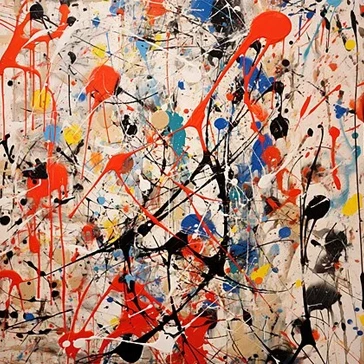
Abstract Expressionism
VIEW MORE
Academic Art, emerging in the 17th century and flourishing through the 19th century, is characterized…
VIEW MORE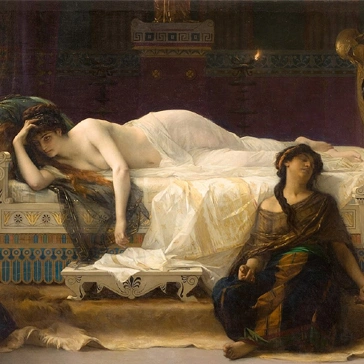
Academic Classicism was a 19th-century art movement that emphasized idealized beauty, harmony, and precise technique,…
VIEW MORE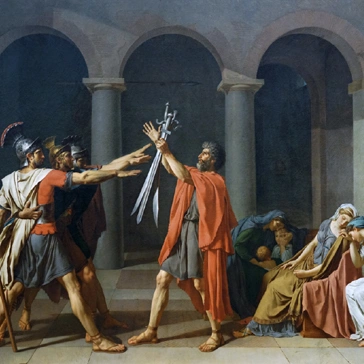
Academic Realism, prominent in the 19th century, is characterized by meticulous technique, polished finish, and…
VIEW MORE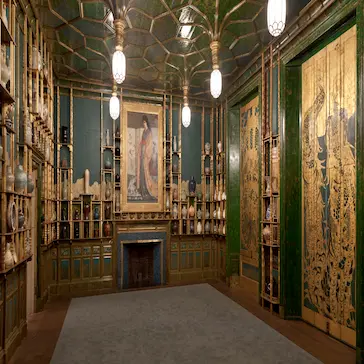
Aestheticism emerged in the 19th century AD, celebrating beauty, refinement, and visual harmony above moral…
VIEW MORE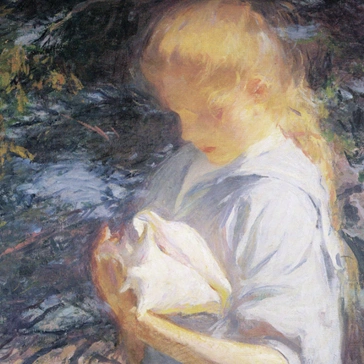
American Impressionism, prominent in the late 19th and early 20th centuries, adapts French Impressionist techniques…
VIEW MORE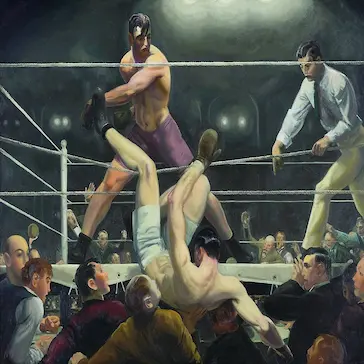
American Realism, emerging in the mid-to-late 19th century, portrays everyday life, ordinary people, and the…
VIEW MORE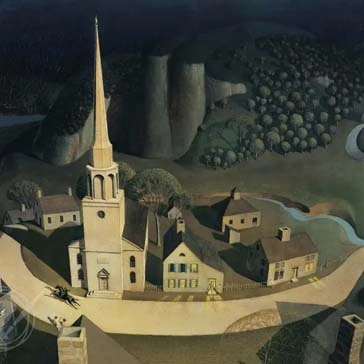
American Regionalism emerged in 20th-century America, where artists like Grant Wood, Thomas Hart Benton, and…
VIEW MORE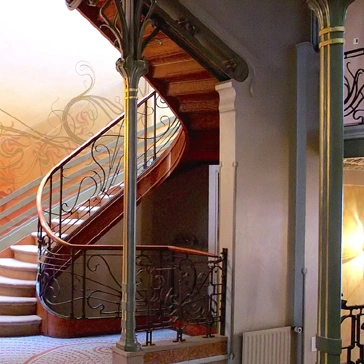
The Art Nouveau movement emerged in the late 19th century across Europe, where artists and…
VIEW MORE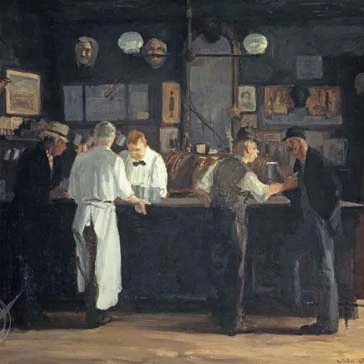
Ashcan School, active mainly in the early 20th century, is known for its focus on…
VIEW MOREExploring the history of Western art movements provides insight into humanity’s evolving creativity and culture. From Early Renaissance precision to the bold experimentation of modern art movements, each style reflects unique philosophies, techniques, and worldviews. This guide offers an overview of significant art styles, highlighting famous painters, distinctive characteristics, and enduring influence.
Early Renaissance art, emerging in 14th-century Italy, revived classical ideals and emphasized realism and perspective. Artists such as Giotto pioneered naturalistic depiction of human forms in religious paintings, setting the stage for centuries of Western painting. These early Renaissance works remain essential examples of iconic art styles in history.
The High Renaissance, spanning the late 15th and early 16th centuries, produced some of the most famous paintings ever created. Leonardo da Vinci, Michelangelo, and Raphael combined technical mastery, anatomy, and perspective to create harmonious compositions. High Renaissance paintings symbolize the pinnacle of classical art and influence modern artistic education.
Northern Renaissance artists, including Jan van Eyck and Albrecht Dürer, emphasized intricate detail and symbolism. Their oil paintings showcased realism and spiritual themes, blending everyday life with moral and religious narratives. Northern Renaissance art remains celebrated for both technical skill and thematic depth.
Mannerism, following the High Renaissance, introduced exaggerated proportions and dynamic compositions. Artists like Parmigianino explored tension, elegance, and complex perspectives, moving away from classical harmony. Mannerism paintings remain influential in understanding artistic experimentation during the Renaissance.
Neo-Classical art emerged in the 18th century, drawing inspiration from ancient Greece and Rome. Jacques-Louis David and other artists emphasized order, clarity, and moral narratives, producing disciplined paintings that continue to exemplify classical composition and heroic themes.
Baroque art, flourishing in the 17th century, is recognized for drama, grandeur, and intense emotion. Caravaggio, Peter Paul Rubens, and Rembrandt used light and shadow to create impactful masterpieces. Baroque paintings remain a cornerstone of art history, celebrated for theatrical composition and dynamic storytelling.
Rococo paintings of 18th-century France featured pastel colors, playful themes, and ornamental elegance. François Boucher and Jean-Honoré Fragonard depicted aristocratic leisure and romance with intricate detail, reflecting the decorative charm of Rococo art.
Romanticism celebrated emotion, imagination, and the sublime in nature. Artists like Francisco Goya, Eugène Delacroix, and Caspar David Friedrich portrayed dramatic landscapes, heroic narratives, and personal expression. Romanticism paintings continue to inspire audiences with their intensity and storytelling.
Realism emerged in the mid-19th century to depict ordinary life with honesty and precision. Gustave Courbet and Jean-François Millet portrayed rural labor, social realities, and everyday experiences, emphasizing observation over idealization. Realism paintings remain essential for understanding the evolution of 19th-century art.
Naturalism emphasized objective depiction of nature and human behavior. Artists captured landscapes, wildlife, and everyday life with detailed observation, blending scientific accuracy with aesthetic beauty. Naturalism influenced both painting and illustration during its peak.
Academic Classicism upheld traditional artistic techniques and classical subject matter. William-Adolphe Bouguereau and other academy-trained painters created idealized figures and mythological scenes with polished technique, influencing art education and exhibitions in Europe and America.
Impressionism, pioneered by Claude Monet, Pierre-Auguste Renoir, and Alfred Sisley, focused on capturing fleeting light and color. Impressionist paintings often depicted landscapes, cityscapes, and social scenes with loose brushwork, creating a sense of immediacy and visual impression rather than strict realism.
Post-Impressionist artists, including Vincent van Gogh, Paul Cézanne, and Paul Gauguin, emphasized structure, symbolism, and emotional expression. Their Post-Impressionism paintings bridged the gap between Impressionist color innovations and modernist experimentation, shaping early 20th-century art.
Pointillism, developed by Georges Seurat and Paul Signac, used small dots of color that visually blended from a distance. This innovative technique explored color theory and optical effects, influencing modern painting and decorative design.
Expressionism paintings emphasized emotion and personal vision over realistic representation. Edvard Munch and Egon Schiele used distorted forms and bold colors to convey psychological depth, leaving a lasting impact on 20th-century art movements.
Cubism, pioneered by Pablo Picasso and Georges Braque, fragmented objects into geometric forms and multiple perspectives. Cubist paintings challenged traditional visual perception and laid the foundation for abstract and modern art movements.
Futurism celebrated speed, technology, and the dynamism of modern life. Italian Futurist painters like Umberto Boccioni depicted movement and energy through innovative compositions, influencing abstract and kinetic art.
Constructivism, originating in post-revolutionary Russia, emphasized geometric design, functionality, and industrial aesthetics. Artists like Vladimir Tatlin created works that combined art, architecture, and social innovation, defining early 20th-century avant-garde art.
Art Nouveau featured flowing lines, decorative patterns, and natural forms. Artists like Alphonse Mucha combined graphic design and fine art to create elegant compositions that influenced architecture, fashion, and illustration.
Art Deco, prominent in the 1920s and 30s, combined geometric elegance with modern luxury. Art Deco paintings and designs emphasized streamlined forms, bold colors, and opulent detail, influencing both European and American art.
Surrealism explored the unconscious mind, dreams, and imagination. Artists like Salvador Dalí and René Magritte created surrealist paintings with unexpected juxtapositions, challenging perception and inspiring literature, cinema, and visual art.
Symbolism emphasized allegory, mythology, and emotion. Artists such as Gustave Moreau and Odilon Redon used evocative imagery to convey spiritual and philosophical themes, influencing decorative arts and modern movements.
Neo-Expressionism revived expressive, figurative painting in the late 20th century. Artists like Anselm Kiefer and Jean-Michel Basquiat used bold colors and dynamic brushwork to explore social, historical, and personal themes.
The Hudson River School celebrated America’s natural landscapes. Thomas Cole and Frederic Edwin Church depicted dramatic scenery with light, atmosphere, and national pride, creating influential landscape paintings.
The Canadian Group of Seven captured the country’s wilderness through bold color and brushwork. Their paintings fostered a distinct national identity and remain celebrated in Canadian art history.
Pre-Raphaelite painters, including Dante Gabriel Rossetti and John William Waterhouse, rejected academic conventions. Their works feature vivid color, literary inspiration, and detailed depictions of medieval and mythological themes.
The Ashcan School portrayed early 20th-century American urban life with realism and energy. Robert Henri and George Bellows captured streets, neighborhoods, and social dynamics, highlighting everyday experiences.
The Nabis group in France blended decorative aesthetics with symbolic content. Artists like Pierre Bonnard and Édouard Vuillard emphasized intimate interiors, flat color, and poetic imagery in their works.
Orientalist paintings depicted Middle Eastern and Asian subjects with European interpretation. Jean-Léon Gérôme and other artists combined detailed realism with romanticized cultural scenes, leaving a lasting influence on 19th-century art.
From Renaissance masterpieces to modern Abstract Expressionism, art movements have shaped visual culture across centuries. Each style offers unique insight into the techniques, philosophy, and worldview of its time, influencing contemporary artists and art enthusiasts worldwide.
By exploring these art movements, including Impressionism, Romanticism, Surrealism, and Neo-Expressionism, we gain a deeper understanding of creativity, cultural evolution, and the enduring impact of human imagination on art history.
Exploring the history of Western art movements provides insight into humanity’s evolving creativity and culture. From Early Renaissance precision to the bold experimentation of modern art movements, each style reflects unique philosophies, techniques, and worldviews. This guide offers an overview of significant art styles, highlighting famous painters, distinctive characteristics, and enduring influence.
Early Renaissance art, emerging in 14th-century Italy, revived classical ideals and emphasized realism and perspective. Artists such as Giotto pioneered naturalistic depiction of human forms in religious paintings, setting the stage for centuries of Western painting. These early Renaissance works remain essential examples of iconic art styles in history.
The High Renaissance, spanning the late 15th and early 16th centuries, produced some of the most famous paintings ever created. Leonardo da Vinci, Michelangelo, and Raphael combined technical mastery, anatomy, and perspective to create harmonious compositions. High Renaissance paintings symbolize the pinnacle of classical art and influence modern artistic education.
Northern Renaissance artists, including Jan van Eyck and Albrecht Dürer, emphasized intricate detail and symbolism. Their oil paintings showcased realism and spiritual themes, blending everyday life with moral and religious narratives. Northern Renaissance art remains celebrated for both technical skill and thematic depth.
Mannerism, following the High Renaissance, introduced exaggerated proportions and dynamic compositions. Artists like Parmigianino explored tension, elegance, and complex perspectives, moving away from classical harmony. Mannerism paintings remain influential in understanding artistic experimentation during the Renaissance.
Neo-Classical art emerged in the 18th century, drawing inspiration from ancient Greece and Rome. Jacques-Louis David and other artists emphasized order, clarity, and moral narratives, producing disciplined paintings that continue to exemplify classical composition and heroic themes.
Baroque art, flourishing in the 17th century, is recognized for drama, grandeur, and intense emotion. Caravaggio, Peter Paul Rubens, and Rembrandt used light and shadow to create impactful masterpieces. Baroque paintings remain a cornerstone of art history, celebrated for theatrical composition and dynamic storytelling.
Rococo paintings of 18th-century France featured pastel colors, playful themes, and ornamental elegance. François Boucher and Jean-Honoré Fragonard depicted aristocratic leisure and romance with intricate detail, reflecting the decorative charm of Rococo art.
Romanticism celebrated emotion, imagination, and the sublime in nature. Artists like Francisco Goya, Eugène Delacroix, and Caspar David Friedrich portrayed dramatic landscapes, heroic narratives, and personal expression. Romanticism paintings continue to inspire audiences with their intensity and storytelling.
Realism emerged in the mid-19th century to depict ordinary life with honesty and precision. Gustave Courbet and Jean-François Millet portrayed rural labor, social realities, and everyday experiences, emphasizing observation over idealization. Realism paintings remain essential for understanding the evolution of 19th-century art.
Naturalism emphasized objective depiction of nature and human behavior. Artists captured landscapes, wildlife, and everyday life with detailed observation, blending scientific accuracy with aesthetic beauty. Naturalism influenced both painting and illustration during its peak.
Academic Classicism upheld traditional artistic techniques and classical subject matter. William-Adolphe Bouguereau and other academy-trained painters created idealized figures and mythological scenes with polished technique, influencing art education and exhibitions in Europe and America.
Impressionism, pioneered by Claude Monet, Pierre-Auguste Renoir, and Alfred Sisley, focused on capturing fleeting light and color. Impressionist paintings often depicted landscapes, cityscapes, and social scenes with loose brushwork, creating a sense of immediacy and visual impression rather than strict realism.
Post-Impressionist artists, including Vincent van Gogh, Paul Cézanne, and Paul Gauguin, emphasized structure, symbolism, and emotional expression. Their Post-Impressionism paintings bridged the gap between Impressionist color innovations and modernist experimentation, shaping early 20th-century art.
Pointillism, developed by Georges Seurat and Paul Signac, used small dots of color that visually blended from a distance. This innovative technique explored color theory and optical effects, influencing modern painting and decorative design.
Expressionism paintings emphasized emotion and personal vision over realistic representation. Edvard Munch and Egon Schiele used distorted forms and bold colors to convey psychological depth, leaving a lasting impact on 20th-century art movements.
Cubism, pioneered by Pablo Picasso and Georges Braque, fragmented objects into geometric forms and multiple perspectives. Cubist paintings challenged traditional visual perception and laid the foundation for abstract and modern art movements.
Futurism celebrated speed, technology, and the dynamism of modern life. Italian Futurist painters like Umberto Boccioni depicted movement and energy through innovative compositions, influencing abstract and kinetic art.
Constructivism, originating in post-revolutionary Russia, emphasized geometric design, functionality, and industrial aesthetics. Artists like Vladimir Tatlin created works that combined art, architecture, and social innovation, defining early 20th-century avant-garde art.
Art Nouveau featured flowing lines, decorative patterns, and natural forms. Artists like Alphonse Mucha combined graphic design and fine art to create elegant compositions that influenced architecture, fashion, and illustration.
Art Deco, prominent in the 1920s and 30s, combined geometric elegance with modern luxury. Art Deco paintings and designs emphasized streamlined forms, bold colors, and opulent detail, influencing both European and American art.
Surrealism explored the unconscious mind, dreams, and imagination. Artists like Salvador Dalí and René Magritte created surrealist paintings with unexpected juxtapositions, challenging perception and inspiring literature, cinema, and visual art.
Symbolism emphasized allegory, mythology, and emotion. Artists such as Gustave Moreau and Odilon Redon used evocative imagery to convey spiritual and philosophical themes, influencing decorative arts and modern movements.
Neo-Expressionism revived expressive, figurative painting in the late 20th century. Artists like Anselm Kiefer and Jean-Michel Basquiat used bold colors and dynamic brushwork to explore social, historical, and personal themes.
The Hudson River School celebrated America’s natural landscapes. Thomas Cole and Frederic Edwin Church depicted dramatic scenery with light, atmosphere, and national pride, creating influential landscape paintings.
The Canadian Group of Seven captured the country’s wilderness through bold color and brushwork. Their paintings fostered a distinct national identity and remain celebrated in Canadian art history.
Pre-Raphaelite painters, including Dante Gabriel Rossetti and John William Waterhouse, rejected academic conventions. Their works feature vivid color, literary inspiration, and detailed depictions of medieval and mythological themes.
The Ashcan School portrayed early 20th-century American urban life with realism and energy. Robert Henri and George Bellows captured streets, neighborhoods, and social dynamics, highlighting everyday experiences.
The Nabis group in France blended decorative aesthetics with symbolic content. Artists like Pierre Bonnard and Édouard Vuillard emphasized intimate interiors, flat color, and poetic imagery in their works.
Orientalist paintings depicted Middle Eastern and Asian subjects with European interpretation. Jean-Léon Gérôme and other artists combined detailed realism with romanticized cultural scenes, leaving a lasting influence on 19th-century art.
From Renaissance masterpieces to modern Abstract Expressionism, art movements have shaped visual culture across centuries. Each style offers unique insight into the techniques, philosophy, and worldview of its time, influencing contemporary artists and art enthusiasts worldwide.
By exploring these art movements, including Impressionism, Romanticism, Surrealism, and Neo-Expressionism, we gain a deeper understanding of creativity, cultural evolution, and the enduring impact of human imagination on art history.
Frequently Asked Questions
Some of the most influential art movements include the Renaissance, Baroque, Romanticism, Impressionism, Post-Impressionism, Cubism, Surrealism, and Abstract Expressionism. Each movement introduced new techniques, perspectives, and philosophies that shaped the visual arts across centuries.
Impressionism focuses on capturing fleeting effects of light and color with loose brushwork, often portraying everyday life or landscapes. Post-Impressionism builds on these techniques but emphasizes structure, emotion, and symbolism, giving more personal expression to the artist’s vision.
Prominent Baroque artists include Caravaggio, Peter Paul Rubens, Rembrandt, and Diego Velázquez. Their works are characterized by dramatic lighting, emotional intensity, and dynamic compositions that create a sense of movement and grandeur.
The Pre-Raphaelites rejected the academic painting conventions of their time, focusing on vivid color, meticulous detail, and literary or mythological themes. Artists like Dante Gabriel Rossetti and John William Waterhouse emphasized moral storytelling and medieval inspiration.
The Hudson River School was an American landscape movement that celebrated the natural beauty of the United States. Artists like Thomas Cole and Frederic Edwin Church created detailed, dramatic depictions of mountains, rivers, and forests, often conveying national pride and environmental appreciation.
Cubism, pioneered by Pablo Picasso and Georges Braque, broke objects into geometric forms and multiple viewpoints. This approach challenged traditional perspective, paving the way for abstract and modern art movements that emphasize conceptual representation over realism.
Neo-Classical art emphasizes order, harmony, and moral narratives inspired by ancient Greece and Rome. Romantic art, on the other hand, celebrates emotion, imagination, and the sublime, often depicting dramatic landscapes, heroic tales, and individual expression.
Surrealism and Symbolism are notable for exploring the unconscious mind, dreams, and imagination. Surrealist artists like Salvador Dalí created unexpected juxtapositions, while Symbolists conveyed spiritual and allegorical themes through evocative imagery.
The Group of Seven, including Lawren Harris and A.Y. Jackson, focused on capturing the rugged Canadian wilderness. Their paintings used bold colors and expressive brushwork to highlight national identity and the beauty of untouched landscapes.
Studying different art movements helps us understand cultural history, artistic innovation, and evolving human perspectives. By exploring styles from Renaissance to Neo-Expressionism, we can appreciate the technical skill, creativity, and societal influences that shaped each period of art history.



GFM Designer Ltd
Maultway Court
67-69 Ruxley Lane
Epsom, Surrey
KT19 0JG. UK
E-MAIL : info@gfmpainting.co.uk
PHONE : +44 (0) 203 592 3482
MOBILE : +44(0) 7834 393 396








